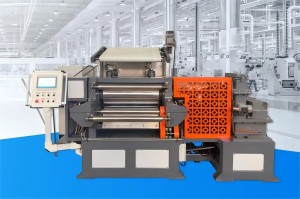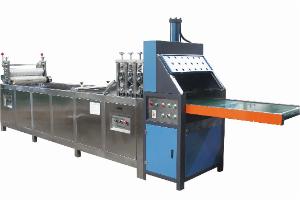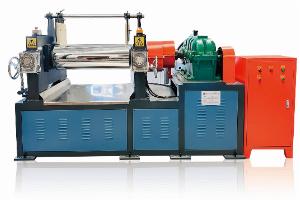
What Is a Rubber Mixing Mill and Why Is It Essential in Rubber Production?
2025-09-28
If you’ve ever wondered how raw rubber turns into the strong, durable materials used in tires, belts, or seals, the journey often starts with a Rubber Mixing Mill. This machine is one of the most fundamental tools in the rubber industry, designed to mix and blend raw rubber with various chemicals, fillers, and additives to prepare it for the next stages of production.
In simple words, the Rubber Mixing Mill is like the “kitchen” of the rubber industry—it’s where the recipe gets mixed before baking.
How Does a Rubber Mixing Mill Work?
A Rubber Mixing Mill is made of two heavy rollers placed close together. The raw rubber compound is fed into the gap between the rollers, where it gets kneaded, stretched, and folded repeatedly.
Here’s a breakdown of the process:
-
Feeding the Material – Rubber sheets or blocks are fed into the machine.
-
Rolling and Kneading – The rollers rotate at different speeds, which helps blend the ingredients evenly.
-
Temperature Control – Rollers are often cooled or heated to control the rubber’s texture.
-
Final Output – The result is a uniform rubber sheet ready for calendering or extrusion.
It’s a straightforward process, but extremely effective in preparing consistent rubber compounds.
Why Is Rubber Mixing Important?
Mixing is not just about blending; it’s about achieving quality and performance. Without proper mixing, rubber products may lack strength, elasticity, or durability. The Rubber Mixing Mill ensures:
-
Even Distribution of Chemicals – So every part of the rubber behaves the same.
-
Improved Physical Properties – Like tensile strength, elasticity, and resistance to wear.
-
Better Processability – Making the next steps, like extrusion or calendering, much smoother.
Without this crucial step, manufacturers would struggle to maintain consistent quality across batches.
Applications of Rubber Mixing Mill
The Rubber Mixing Mill is used across a wide range of industries, such as:
-
Automotive – Tires, seals, gaskets, and hoses.
-
Industrial Machinery – Conveyor belts, rollers, and vibration pads.
-
Footwear – Soles and protective rubber parts.
-
Construction – Insulation sheets and waterproofing membranes.
Basically, if the product involves rubber, chances are it started in a Rubber Mixing Mill.
Advantages of Using Rubber Mixing Mills
Now, let’s talk about why factories still rely heavily on this machine:
-
Strong Mixing Capability – Able to handle natural and synthetic rubbers.
-
Cost-Effective – Lower investment compared to high-end automated systems.
-
Durable and Reliable – Heavy-duty design means long service life.
-
Simple to Operate – Easy to maintain, with flexible production capacity.
For many companies, the Rubber Mixing Mill strikes the perfect balance between efficiency and affordability.
How to Choose the Right Rubber Mixing Mill
When buyers search for the right machine, they often consider:
-
Size of Rollers – Larger mills process bigger volumes.
-
Motor Power – Stronger motors mean better mixing strength.
-
Cooling/Heating Systems – For precise temperature control.
-
Supplier Reputation – A reliable supplier ensures both machine quality and service.
Choosing the right Rubber Mixing Mill can make a huge difference in production efficiency and final product quality.
Conclusion: A Must-Have for Rubber Manufacturing
The Rubber Mixing Mill may not look flashy, but it is the backbone of rubber production. By ensuring proper mixing and uniformity, it sets the stage for high-quality rubber products across multiple industries.
So whether you’re making tires, conveyor belts, or footwear soles, remember—good rubber starts with a good Rubber Mixing Mill.


